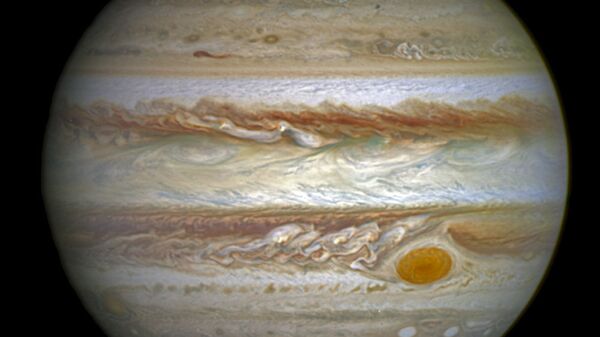NASA’s Cassini orbiter captured images of the cosmic mosaic in 2000 from a distance of roughly 6.2 million miles.
The notable disc — it’s actually an active storm about 10,000 miles in diameter — on the solar system’s largest planet has intrigued scientists since at least the 1830s, according to NASA, but experts estimate it could have been raging for 350 years by now. Even the most dedicated substance-consuming rockstars can’t match that.
The Great Red Spot’s size easily dwarfs Earth’s 7,918-mile diameter.
"Juno and her cloud-penetrating science instruments will dive in to see how deep the roots of this storm go, and help us understand how this giant storm works and what makes it so special," San Antonio-based researcher Scott Bolton said in a June 30 announcement.
NASA hopes to capture more stunning imagery of the Great Red Spot during Juno’s pass. The JunoCam is one of eight instruments aboard the spacecraft that will be active and fully functional during the encounter, NASA emphasized.
As of July 4, Juno will have been orbited Jupiter for one full year, traversing about 71 million miles in the process.
But Juno isn’t the only tool NASA is deploying to investigate the massive fiery-looking planet. On June 30, NASA’s Gemini North telescope said "aloha" to scientists and offered high-resolution imagery to help scientists piece together just what goes on over at Jupiter. Gemini gives researchers three types of observations to contextualize data collected by Juno
"We get spatial context from seeing the whole planet. We extend and fill in our temporal context from seeing features over a span of time," Glen Orton of the Jet Propulsion Laboratory in Pasadena, California said. Perhaps most important to the scientific endeavor, the telescope gathers data to "supplement with wavelengths not available from Juno.”
"The combination of Earth-base and spacecraft observations is a powerful one-two punch," Orton said.







